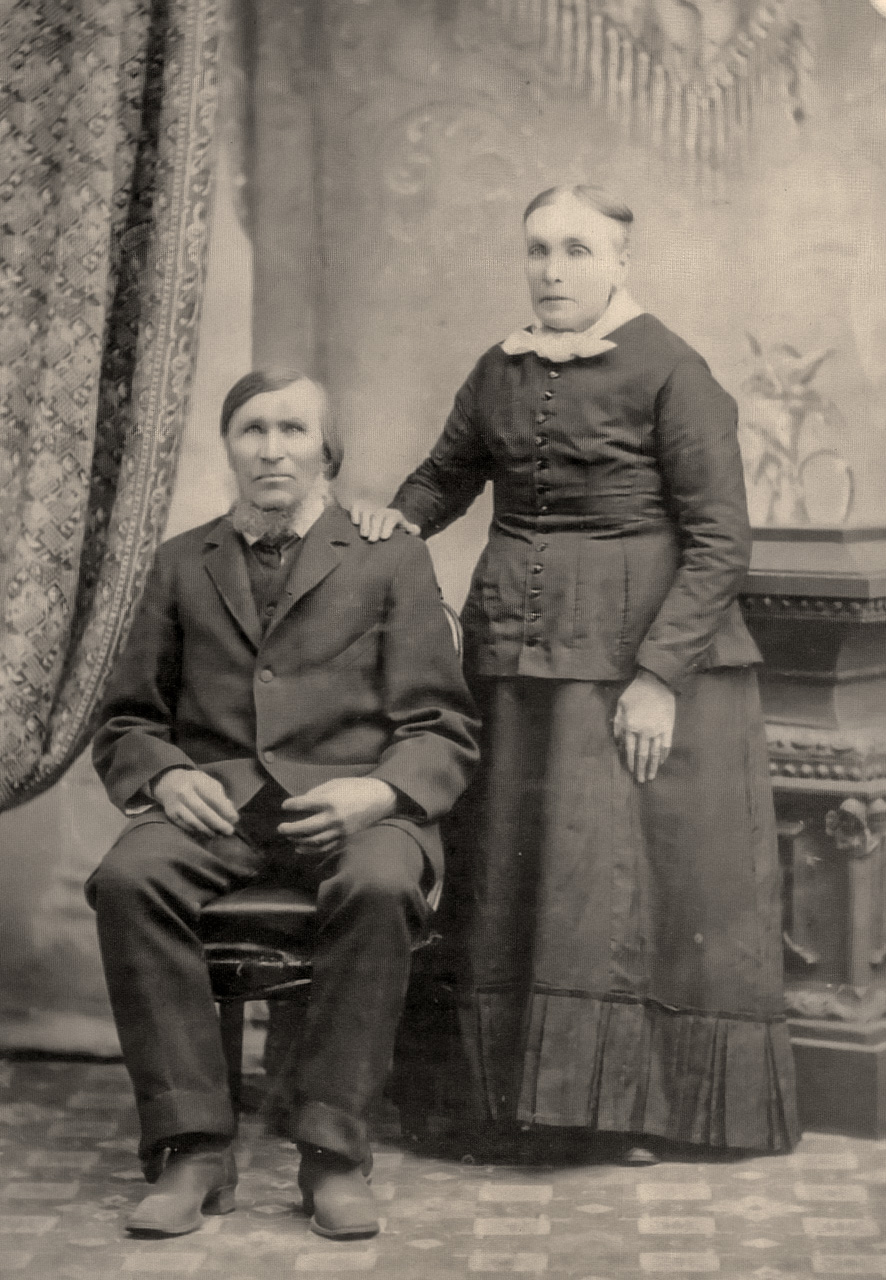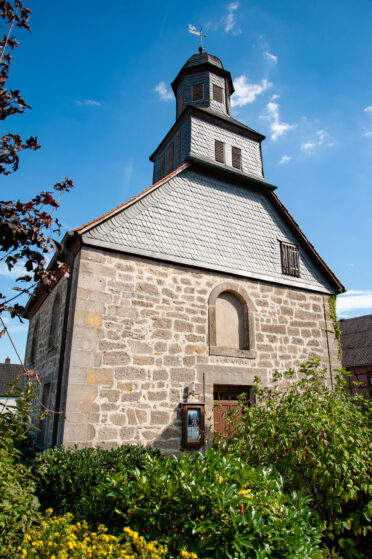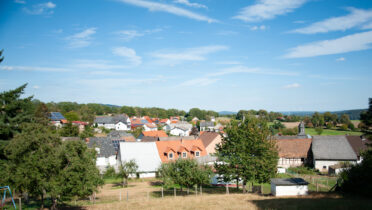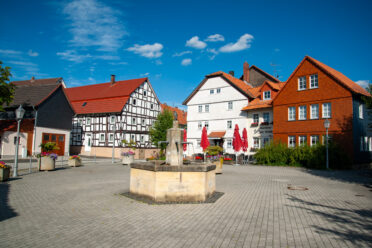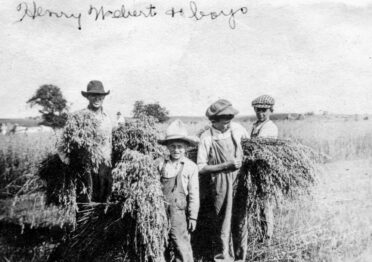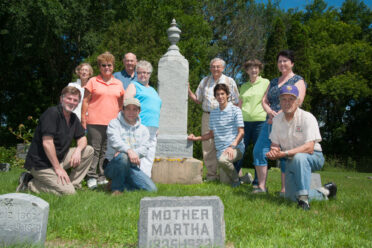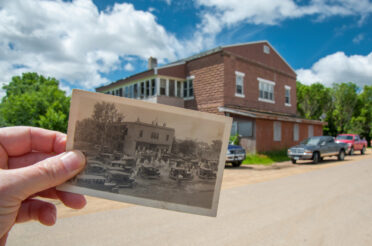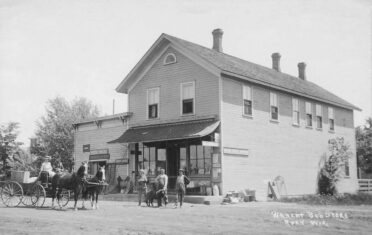George August Webert was born on 25 August 1819 in the village of Olberode, which is now located in Schwalm-Eder-Kreis, Hessen, Germany.
His parents were Johann Webert (1788-1869) and Anna Fröhlich (1785-1856).
He had one known sibling, Magdalena Webert (1816-1884). Magdalena remained in Olberode her entire life and married Johann Adam Diehl.
Olberobe
Olberode lies almost in the center of Germany about 100 km northeast of Frankfurt. It is located in the Knüllgebirge, which is a low mountain range in the Aula river valley. The area is characterized by rolling hills, forests and agricultural landscapes typical of the Hesse region.
At the time of George’s birth in 1819, Olberode was part of the Electorate of Hesse (Kurfürstentum Hessen), which was ruled by the Elector of Hesse-Kassel. This historical context was important for the region’s political and social organization, reflecting the broader changes in German states’ territorial arrangements following the Napoleonic Wars and the Congress of Vienna.
During the early 1800s at the time of George’s birth the area would have been predominantly Lutheran.
Most likely the Webert family of Olberode were farmers. In the early 1800s, the agriculture practiced would have been typical of rural villages in the central Hesse region, focusing on a mix of crop farming and animal husbandry. This type of mixed farming was common in the region due to its rolling hills, fertile soil, and temperate climate.
Most likely George did not learn to read and write as a child. Children from poorer families, particularly those in rural areas, had little access to formal education. These children often worked on family farms or in trades, and their education, if it occurred at all, was likely informal and limited to basic literacy skills taught by family members or local clergy.
Olberode in 2019
Married with children
In 1843 at the age of 24, George married Anna Catherine Goetz, who was also from Olberode.
While living in Olberode, George and Anna had 11 children (4 boys and 7 girls). Seven of those lived to adulthood.
Three children born from 1850 to 1853 all died as infants. For rural areas in Germany, including Hesse, the child mortality rate in 1850 is estimated to have been around 200 to 250 deaths per 1,000 live births. This high rate reflects the impact of disease, poor nutrition, and limited medical care.
Sailing to America
In 1865 began George and his family began their emigration to the United States.
A number of issues in Hesse led to heavy emigration including economic difficulties, social pressures, political instability, and the lure of better opportunities abroad, particularly in the United States. These factors, together with the practical means to emigrate being more accessible, prompted many Hessians to seek new lives outside of Germany.
It is possible that the family chose to travel in 1865 given that the US Civil War had ended in April of that year. In November 1865, New York City was a bustling metropolis undergoing significant social, political, and economic changes, largely influenced by the aftermath of the American Civil War, which had ended in April 1865. The President of the United States was Andrew Johnson, who became president on April 15, 1865, following the assassination of President Abraham Lincoln.
The journey from Hesse to Bremen could have been done by horse-drawn carriage, wagon, or increasingly by rail, which was becoming more common. At the Port of Bremen, he would have had to wait for their ship to be ready to sail. This waiting period could vary depending on ship schedules and the availability of passenger accommodations.
George sailed from Port of Bremen with his Anna, son Jacob and six daughters on the vessel named America. There were 759 passengers on the ship. The voyage from Bremen to New York generally took between 6 to 8 weeks. This was typical for sailing ships of the time. Steamships, which were becoming more prevalent, could complete the voyage in about 2 to 3 weeks, but the majority of emigrants might have traveled on sailing vessels. Details of the America are not known.

The eldest son, Michael, remained in Germany and it is believed he was in military service at the time. Most likely Michael, who was 22 in 1865, had been conscripted.
The family arrived in New York on 9 November 1865.
Wisconsin bound
From New York, the family most likely took a train to Chicago. It’s likely they could have also taken a train from Chicago to Sparta, Wisconsin and then horse-drawn carriage to Chippewa County.
The family initially settled near present-day Cadott, near where George’s brothers-in-law, Johann Heinrich and Henry Goetz, had previously settled in Sigel. Early settlers in Sigel, like in much of Chippewa County, were predominantly of German and other European descent. They were attracted to the area by the promise of fertile land for farming and the opportunities provided by the logging industry.
The Webert family remained in the Cadott area for one year. Their daughter, Caroline, was born there.
Move to Elk Mound
For reasons unknown, the family moved to Elk Mound. It’s possible that their son Michael arrived after being discharged from the military and started farming in Elk Mound. Michael was the first of George and Anna’s children to get married. He married Elizabeth Ausman in Dunn County on 17 September 1869.
The hamlet of Elk Mound was settled in 1870, at the time when the road of the Chicago, St. Paul, Minneapolis & Omaha railway was being constructed. The settlement was surveyed and platted in May, 1874. There was a station, two churches, a post-office, a district school, a store, a blacksmith shop, and a steam feed-mill, owned and operated by E.J. Martiboy. There are about 100 inhabitants here. The population of the township in 1890 was 695.
By 1870, George and Elizabeth and and their six children are living in Elk Mound in Dunn County. The 1870 census lists George as a farmer with real estate worth $2500 and personal belongings at $500. His son Michael and his wife Elizabeth live next door. Neighbours listed in the census are William Bushendorf and Frank Scheibe, who were also German immigrants. The census lists about 360 residents of Elk Mound.

Tragedy struck the family in the mid-1870s when 15-year-old daughter Elizabeth and 9-year-old daughter Anna died. The cause of their deaths is unknown however, given that two children died within a few years the most likely cause of death would be an infectious disease, possibly scarlet fever. At the same time, in 1874, Michael and Elizabeth’s first child died at childbirth.
In 1880, George and Anna were living in in the town of Elk Mound with their three daughters. William Bushendorf living nearby.

The Dunn County News of 11 October 1884 reported: Mr. Geo Webert had a valuable cow killed by the cars last Saturday evening. The ‘cars’ mentioned in the news item probably referred to railroad cars and not automobiles which did not arrive in Dunn County till the early 1900s.
On 31 January 1894, George’s wife of 50 years, Anna, died. She was 69.
In 1900, George was living in Spring Brook with his daughter, Catherine, and her husband, John Ausman. According to the census George could not read or write. Despite having lived in Wisconsin for 35 years, George could not speak English. German was widely spoken in Dunn County in the late 1800s so George probably had little trouble communicating and perhaps little incentive to learn English.
In 1900, William McKinley was president of the United States at the time and “Fighting Bob” La Follette was the governor of Wisconsin. The 1900 election was held during a period when the Republican Party was strong in Wisconsin, particularly due to the economic prosperity and nationalistic sentiment following the Spanish-American War. Dunn County, which had a significant number of German-American voters and a strong agricultural base, generally supported Republican policies that were seen as favorable to economic growth and stability. McKinley was assassinated in 1901 and Theodore Roosevelt became president.
On 8 July 1903 George was living in Spring Brook, Dunn, Wisconsin, USA. The Eau Claire Leader reported that ‘Mr Webert is very sick.’
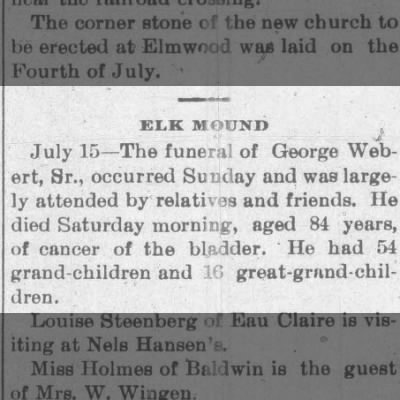
On Saturday, 11 July 1903, at the age of 83 years, 10 months and 16 days, George passed away at his residence in the John Ausman home. He had been suffering from bladder cystitis for six weeks and died at home. The cystitis was possibly a kidney infection or urinary tract infection, which today could be easily treated with antibiotics. At the time of George’s death, antibiotics had not been discovered.
George and Anna had 12 children and 61 grandchildren (54 survived him at his death).
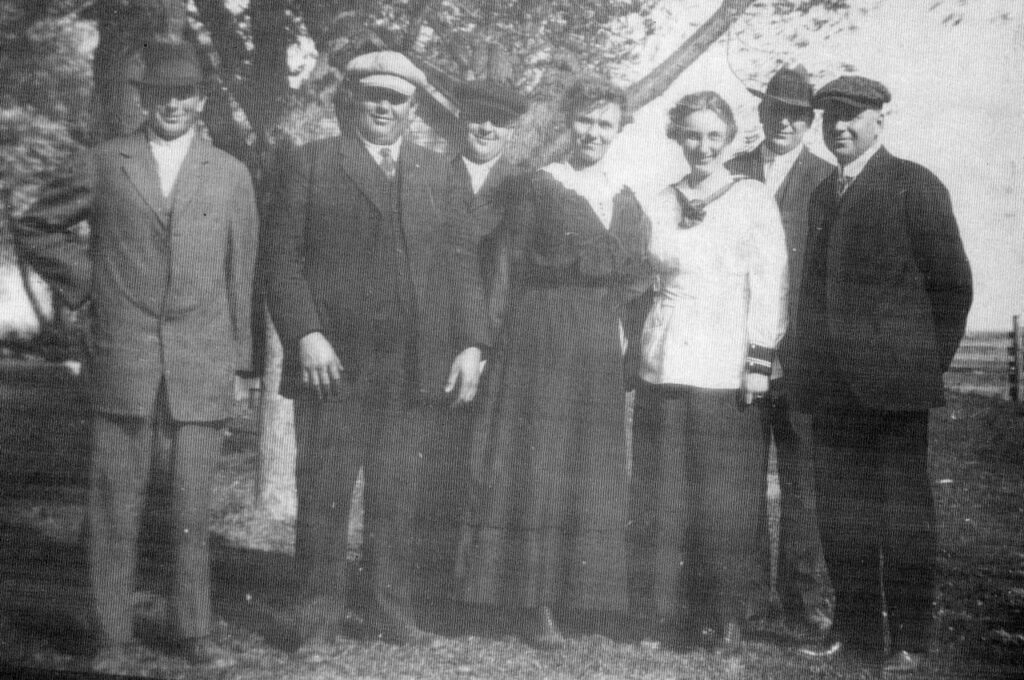
George was buried in Evergreen Cemetery in Elk Mound.


